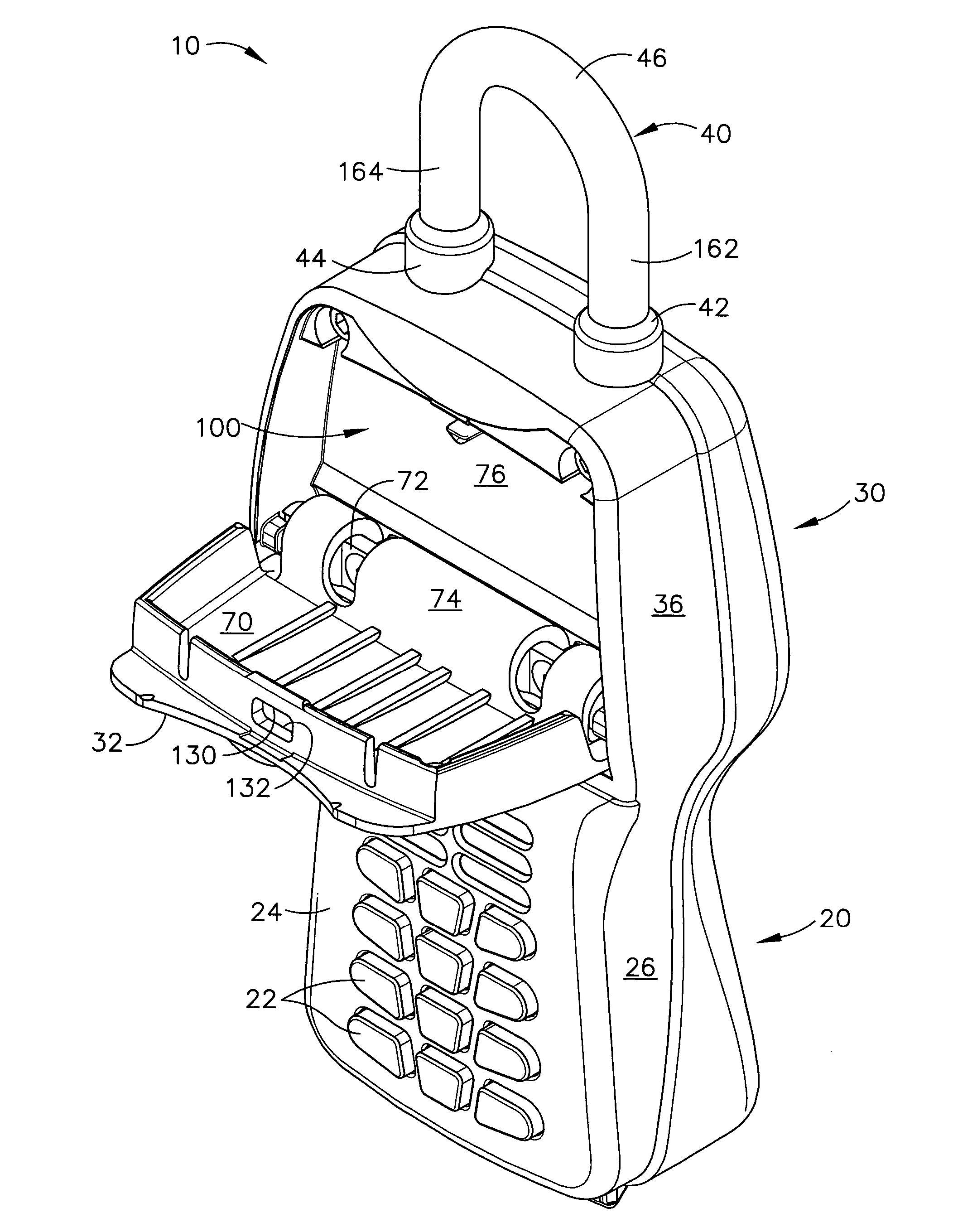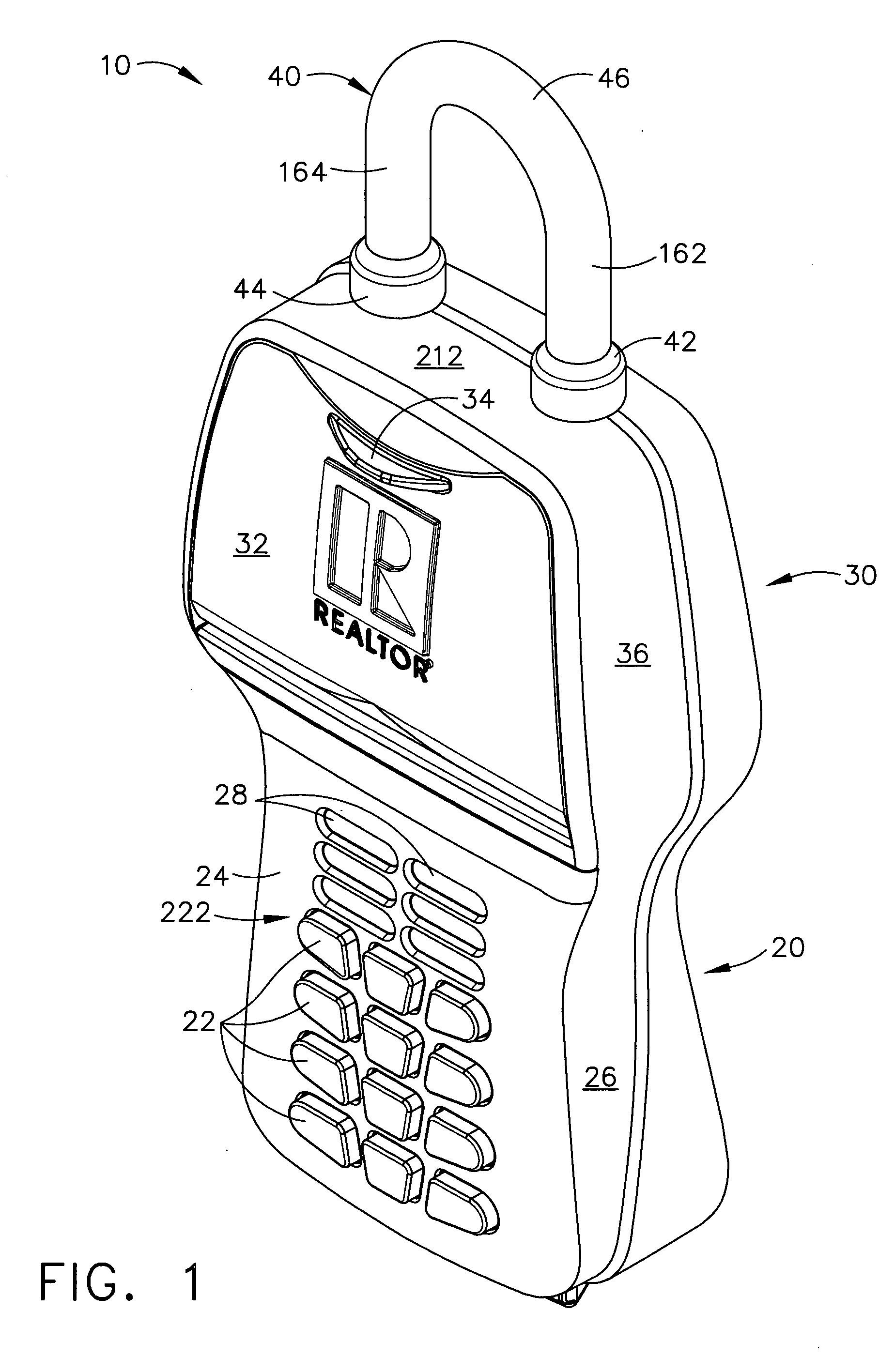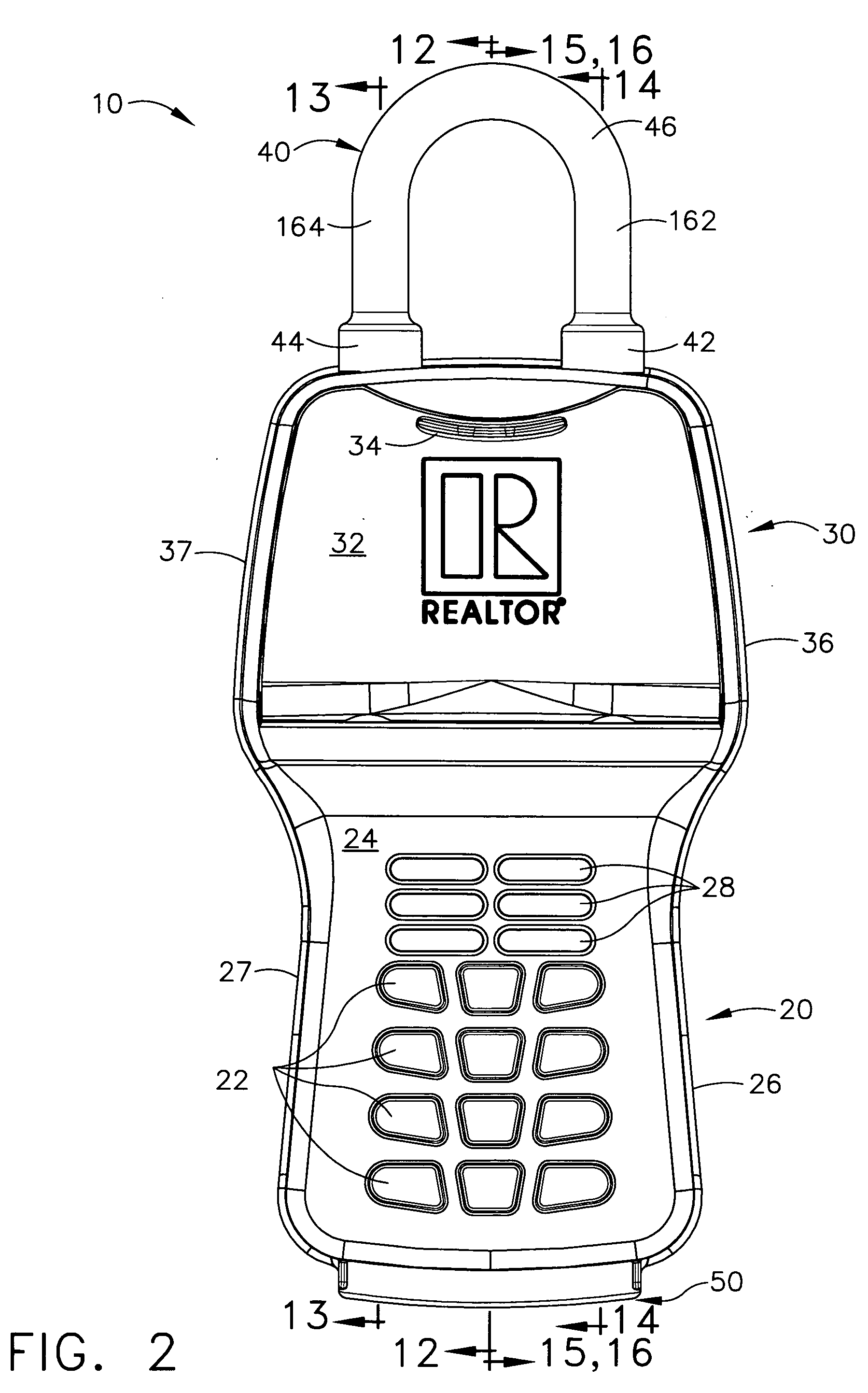[0011] Accordingly, it is an
advantage of the present invention to provide an electronic lock box system used in real estate sales systems in which the user carries only a
credit card-sized portable memory card, and in which the user receives a diversified
numeric value from a central “clearinghouse computer,” or from a regional “office computer,” in which the diversified value represents a combination of the epoch time and the user's
personal identification number (PIN), when run through an
encryption routine. The diversified
numeric value periodically changes over time using an
algorithm known both to the lock box and to the clearinghouse computer, in which system “epoch time” is divided into time intervals (“window intervals” or “window interval periods”) that, when advanced to the next window interval, change the result obtained by decrypting the diversified
numeric value. The diversified
numeric data resident on the portable memory card is directly transferred to the lock box computer, and this diversified
numeric data is then decrypted by the lock box's computer. To allow access to the key compartment (or to unlock the
shackle in some circumstances), the user must manually enter the correct ID information on a keypad of the lock box, which in many cases is the user's PIN.
[0012] It is another
advantage of the present invention to provide an electronic lock box system used in real estate sales systems which operates in a “contractor mode” having a somewhat lesser security state, so that a contractor is provided with a numeric ID code that can be entered on a keypad of an electronic lock box to obtain access to a secure compartment within the lock box, without the need for a memory card. However, the numeric code is only valid for a predetermined time interval. The “owner” of the lock box provides instructions to the lock box to enable this contractor mode. A central clearinghouse computer can be used to generate more than one such contractor mode code for the same time interval (e.g., one day), and the lock box owner uses that information to set up the corresponding lock box, and to inform the one or more contractors as to their correct numeric ID codes to be used during the appropriate time interval.
[0013] It is yet another
advantage of the present invention to provide an electronic lock box apparatus that includes a mechanical attachment device (e.g., a shackle) and a secure compartment with a controlled access member (e.g., a key compartment with a hinged door), in which a single
linear actuator is movable in two different directions to either release the shackle or to open the key compartment door.
[0014] It is still another advantage of the present invention to provide an electronic lock box apparatus that includes a mechanical attachment device (e.g., a shackle) and a secure compartment with a controlled access member (e.g., a key compartment with a hinged door), in which there are latching members that either (1) hold the shackle or key compartment door in place, or (2) release those components from being held in place. A single linear
actuator moves to operate these respective latching members, such that movement of the
actuator in opposite directions releases either one or the other of these latching members. Once released, the shackle or the key compartment door can later be moved back into their respective “latched” positions and, without further movement by the linear
actuator, will become locked in their “held” positions.
[0015] It is a further advantage of the present invention to provide an electronic lock box apparatus that includes a way of preventing damage to the electromechanical components when a movable part becomes jammed or frozen, without the use of extra
overcurrent protection devices that perform no other function.
[0016] It is a yet further advantage of the present invention to provide an electronic lock box apparatus that is designed so that it is impossible for its card expiring access codes to be altered in order to extend the card's life, and thus prevents “immortal keys” from existing. Each memory card /
smart card used with the invention's lock box design must be periodically renewed with an encoded value that does not have a predictable pattern from one time window to the next. Therefore, access rights for every card will expire after predetermined time window has passed.
 Login to View More
Login to View More  Login to View More
Login to View More 


